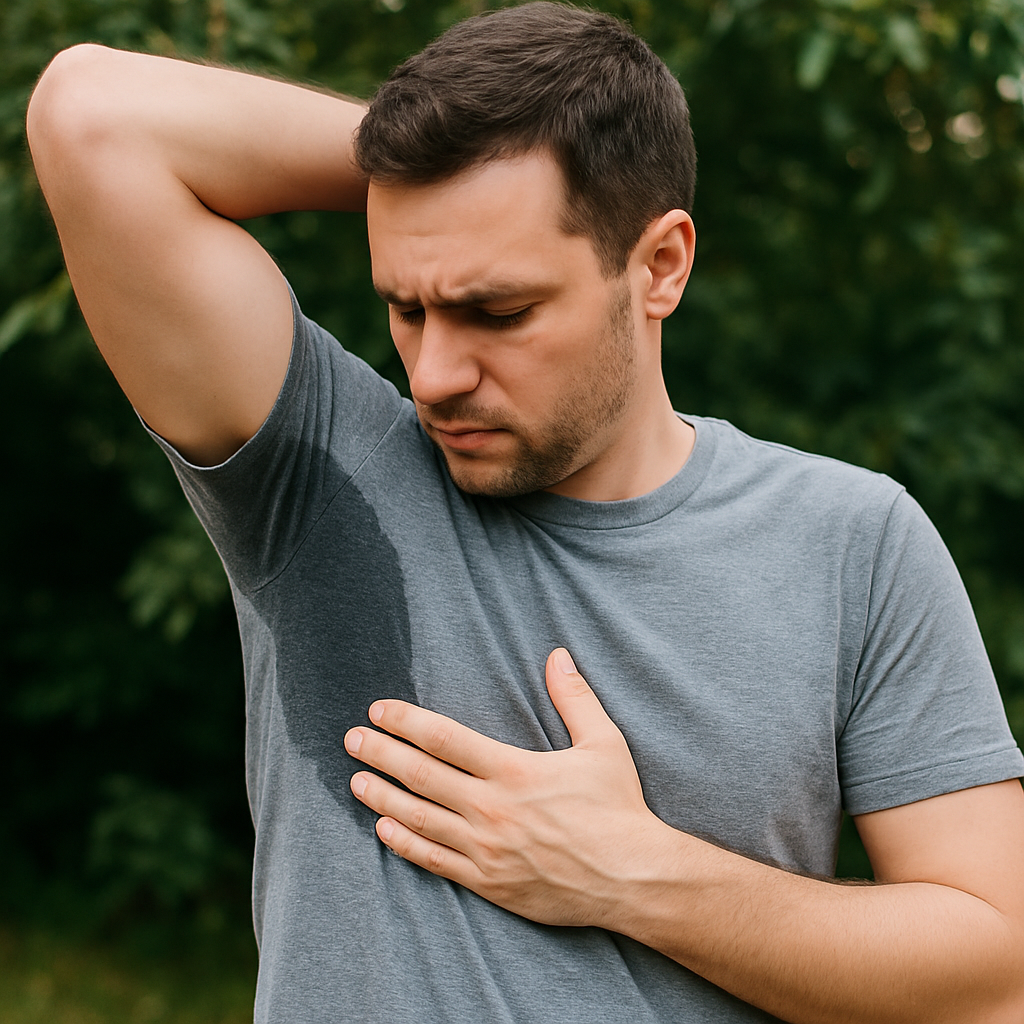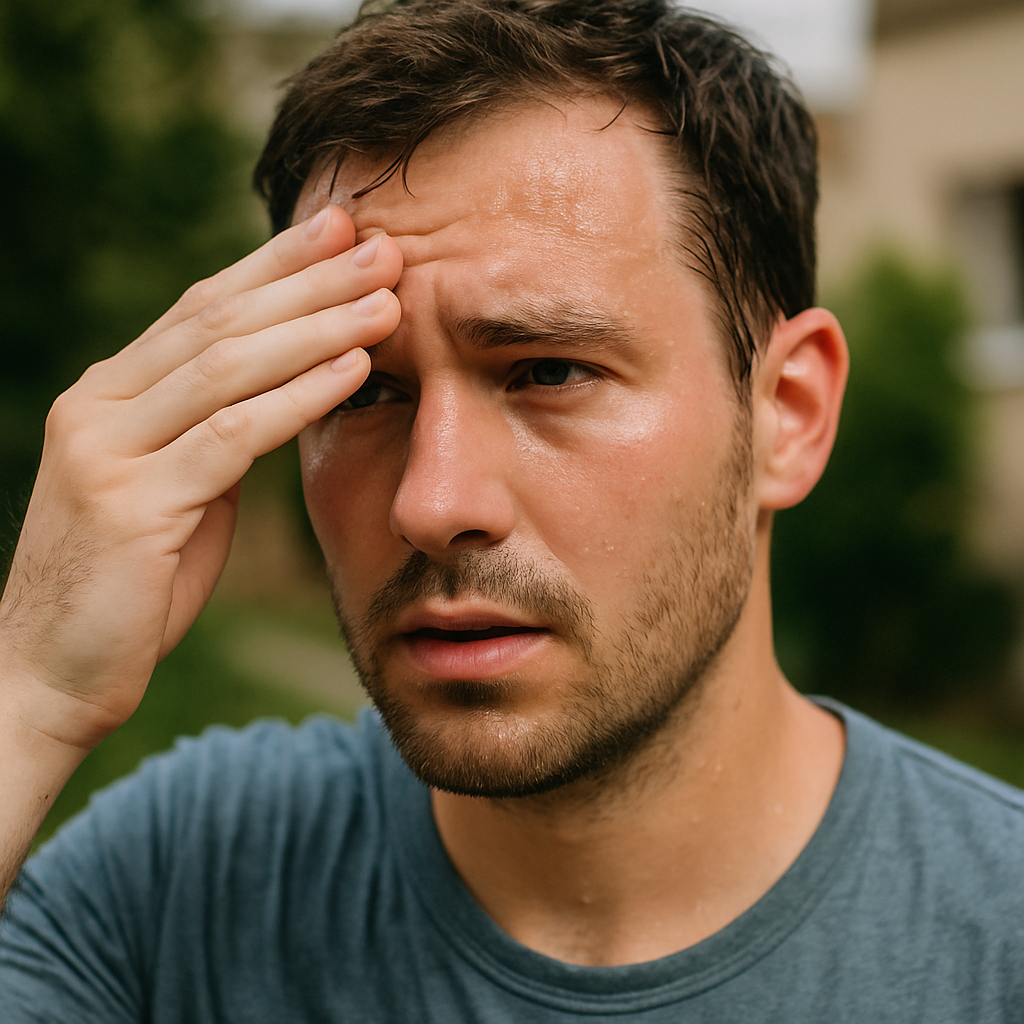Ask Ayurvedic doctor a question and get a consultation online on the problem of your concern in a free or paid mode. More than 2,000 experienced doctors work and wait for your questions on our site and help users to solve their health problems every day.
Shop Now in Our Store
How to Control Sweating: Natural Ways to Stay Fresh

Sweating is a natural process our bodies use to cool down, but sometimes it feels like an uncontrollable nuisance — especially when it happens excessively or at inconvenient times. If you’re wondering how to control sweating and looking for practical, natural solutions, you’re in the right place. Whether it’s how to control excessive sweating during hot summer days or tackling how to control sweating on face or how to control palm sweating, this article dives into realistic and effective ways to keep you feeling fresh and confident. Sweating control is not just about comfort; it can boost your self-esteem and help you avoid embarrassing moments in social or professional settings.
So, why does sweating get out of hand sometimes? And what can you do about it naturally without relying only on sprays or medications? Let’s explore why excessive sweating happens, then move on to some easy, Ayurvedic-inspired tips to take back control over your body's cooling system.

Why Excessive Sweating Happens
Before we jump into how to control sweating, it's important to understand why it happens. Sweating is primarily a body’s response to heat and physical exertion, but several other factors can turn normal sweating into excessive sweating — medically known as hyperhidrosis.
Firstly, your body's sweat glands are controlled by the autonomic nervous system, which means you can’t consciously decide when to sweat. But sometimes this system gets a little overactive, causing more sweat than necessary. This can be triggered by heat, humidity, stress, or even certain foods.
Hormonal changes, such as those during puberty, menopause, or pregnancy, also ramp up sweat production. And don’t forget medical conditions like thyroid problems, infections, or diabetes — these can all affect sweating levels. Even anxiety and stress can trigger excessive sweating in specific areas, like the palms or scalp.
Finally, some people naturally have more sweat glands or more active sweat glands, making them sweat more than others — no matter the temperature or activity level.
Understanding these triggers is key when figuring out how to control excessive sweating because your approach might differ depending on the cause.
Natural and Ayurvedic Ways to Control Sweating
If you’re looking for gentle, natural ways to reduce sweat without harsh chemicals or invasive treatments, Ayurveda and traditional remedies offer many time-tested options. These methods focus on balancing your body’s internal heat and calming the nervous system.
1. Drink Plenty of Water: It might sound counterintuitive, but staying well-hydrated helps regulate body temperature and reduce sweating. When you’re dehydrated, your body can overcompensate by sweating more.
2. Herbal Teas: Sipping on sage tea, which has natural astringent properties, can help reduce sweating control by tightening sweat glands. Similarly, green tea or chamomile tea supports relaxation and reduces stress-induced sweating.
3. Use Natural Powders: Applying powders like sandalwood or talc (but choose ones without harmful chemicals) to sweaty areas can absorb moisture and keep skin dry.
4. Dietary Adjustments: Avoid spicy foods, caffeine, and alcohol, which all tend to trigger sweat glands. Instead, focus on cooling foods like cucumber, watermelon, and mint.
5. Practice Relaxation Techniques: Stress and anxiety can worsen sweating, especially how to control sweating on face and how to control scalp sweating. Meditation, yoga, or deep breathing exercises may help reduce your nervous system’s overactivity.
This approach is slow but effective for those wanting a natural sweat control strategy without side effects.

How to Control Sweating in Specific Areas of the Body
Sometimes sweating doesn’t just happen generally — it can be really focused on specific spots like your face, scalp, underarms, or palms. Knowing how to control sweating in these areas can make a big difference in your daily comfort and confidence.
How to Control Sweating on Face and Scalp
Facial and scalp sweating can be especially tricky because these areas are always visible, and the sweat can make your skin look oily or your hair limp. Here are some tips to keep things under control:
-
Keep Your Face Clean and Dry: Wash your face regularly with a gentle cleanser to remove excess oils and sweat. Avoid heavy creams that can clog pores and make sweating worse.
-
Use Mattifying Products: Lightweight, mattifying lotions or powders designed for oily skin can reduce shine and absorb sweat. Just make sure they’re non-comedogenic to avoid breakouts.
-
Natural Astringents: Witch hazel or rose water applied with a cotton pad can tighten pores and control sweating on face naturally.
-
Control Scalp Sweating: Try using shampoos with ingredients like tea tree oil or menthol that cool the scalp and reduce sweating. Avoid heavy hair products that trap heat.
-
Stay Cool and Avoid Stress: Since how to control scalp sweating often links to stress, practicing mindfulness or stress-reduction exercises can make a noticeable difference.
How to Control Sweating in Underarms and Palms
Underarms and palms are classic sweat zones that many struggle with. Here’s how to manage these stubborn areas:
-
Choose the Right Antiperspirant: For underarms, use clinical-strength antiperspirants that block sweat glands temporarily. Apply them at night for best results.
-
Wear Breathable Fabrics: Cotton and moisture-wicking fabrics help air circulate and reduce sweat buildup.
-
Keep Palms Dry: Carry a small towel or absorbent cloth to discreetly wipe sweaty palms during stressful or hot moments.
-
Try Natural Remedies: Baking soda mixed with water makes a simple paste that can be applied to underarms or palms to neutralize odor and absorb moisture.
-
Botox Injections: For severe cases of palm sweating (hyperhidrosis), medical treatments like Botox can block nerve signals that cause sweating — but it’s always best to try natural methods first.
When Sweating Becomes a Medical Concern
While sweating is normal, sometimes it goes beyond what’s comfortable or healthy. If you find yourself drenched in sweat without obvious reasons, or sweating disrupts your daily life, it could be a sign of medical hyperhidrosis.
Other warning signs to watch for:
-
Sudden, excessive sweating that lasts a long time
-
Sweating only on one part of the body
-
Sweating accompanied by fever, weight loss, or chest pain
If you experience these, it’s important to consult a healthcare provider. They may recommend treatments like prescription antiperspirants, oral medications, or even surgery in extreme cases.
For many, learning how to control sweating in summer or during daily activities can reduce the need for medical intervention. Staying hydrated, managing stress, and using natural remedies can go a long way.
Conclusion
Sweating is a natural and necessary process, but learning how to control sweating can help you feel more comfortable, confident, and fresh throughout your day. Whether you’re dealing with excessive sweating on your face, scalp, underarms, or palms, there are plenty of natural and effective ways to take back control without relying solely on harsh chemicals or expensive treatments.
From simple lifestyle changes like drinking enough water and choosing the right clothes to herbal remedies and stress management techniques, these approaches help balance your body's temperature and reduce overactive sweat glands. Remember, if sweating becomes excessive or interferes with your life, it’s always best to consult a medical professional to explore further treatment options.
By incorporating some of these sweat control tips, you can better manage those sweaty moments and stay cool — no matter what life throws at you.
So next time you wonder how to control sweating in summer or feel overwhelmed by how to control palm sweating, try a few natural methods first. You might be surprised at how much they can help! And don’t hesitate to share these tips with friends or family who struggle with the same issue — because nobody should feel embarrassed about sweating, but everyone deserves to feel comfortable.
FAQs
What foods reduce sweat?
Certain foods like cucumbers, watermelon, mint, and green tea can help reduce sweating by cooling your body internally. Avoid spicy foods, caffeine, and alcohol, as they tend to increase sweat production.
Does shaving armpits reduce sweat?
Shaving armpits doesn’t directly reduce sweat, but it can help minimize odor since hair traps sweat and bacteria. Plus, it makes applying antiperspirants or powders easier and more effective.
Is scalp sweating linked to stress?
Yes, scalp sweating often increases with stress or anxiety due to activation of the nervous system. Managing stress through relaxation techniques can help control sweating on the scalp.
This article is checked by the current qualified Dr Sujal Patil and can be considered a reliable source of information for users of the site.

